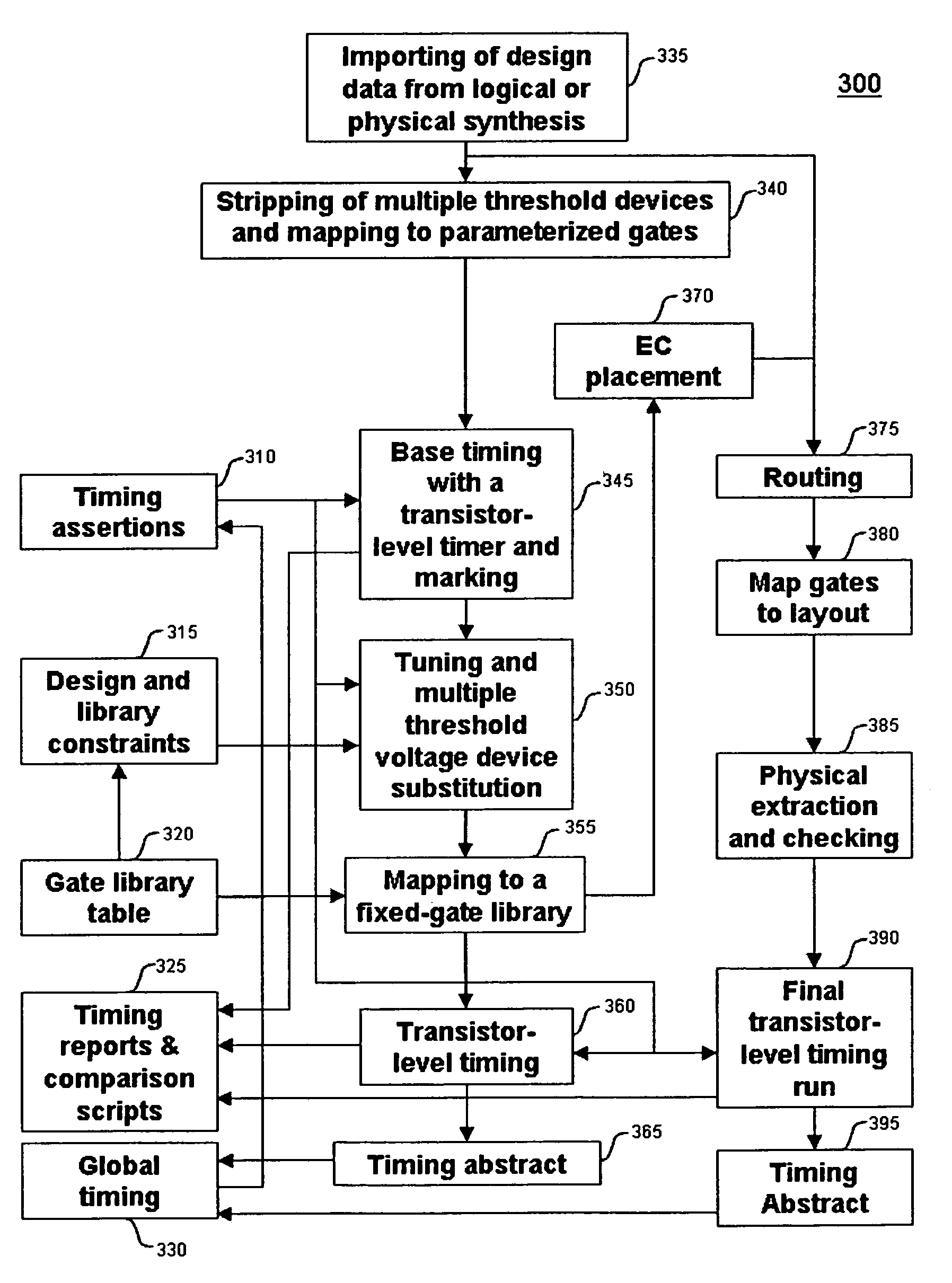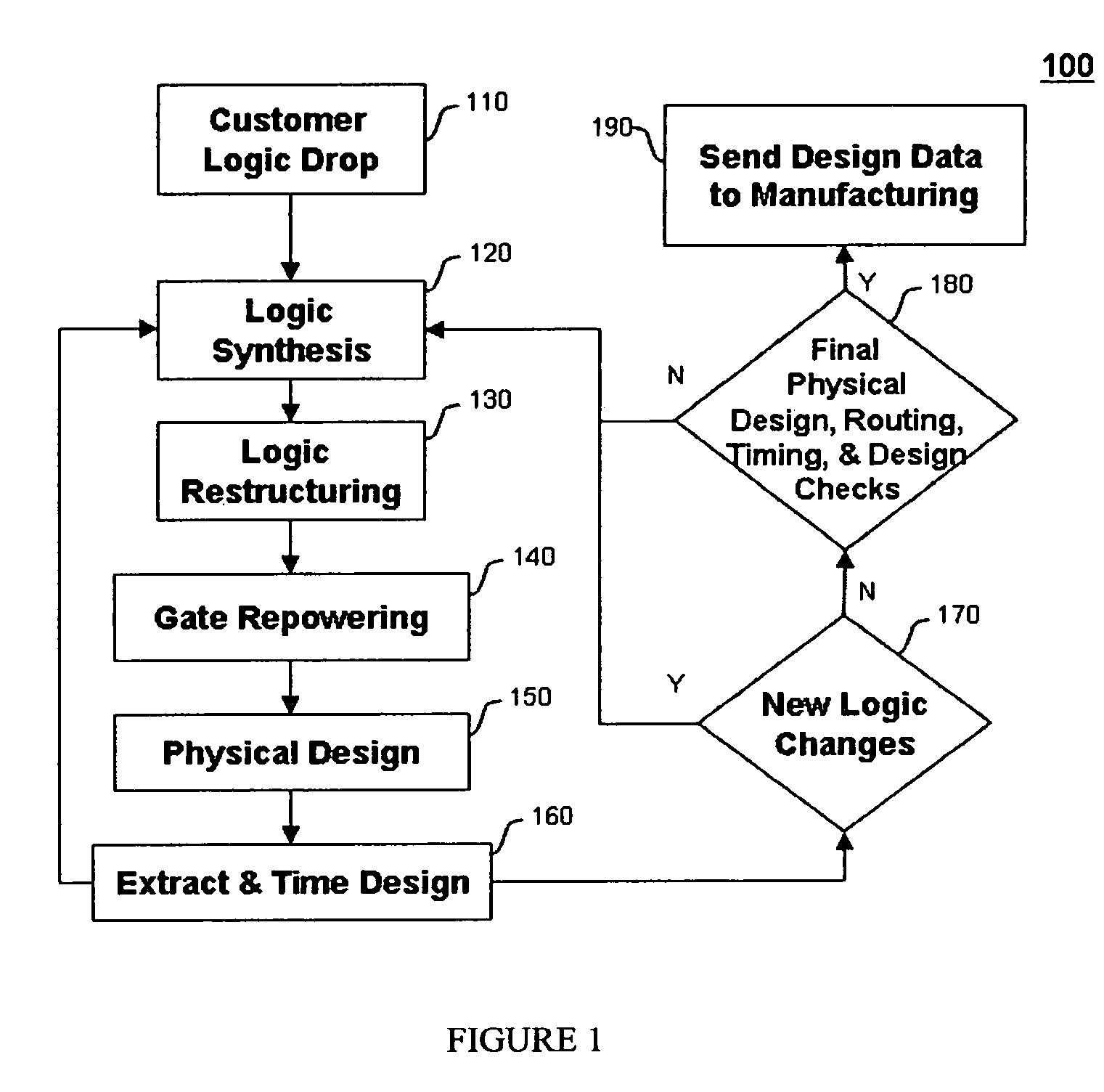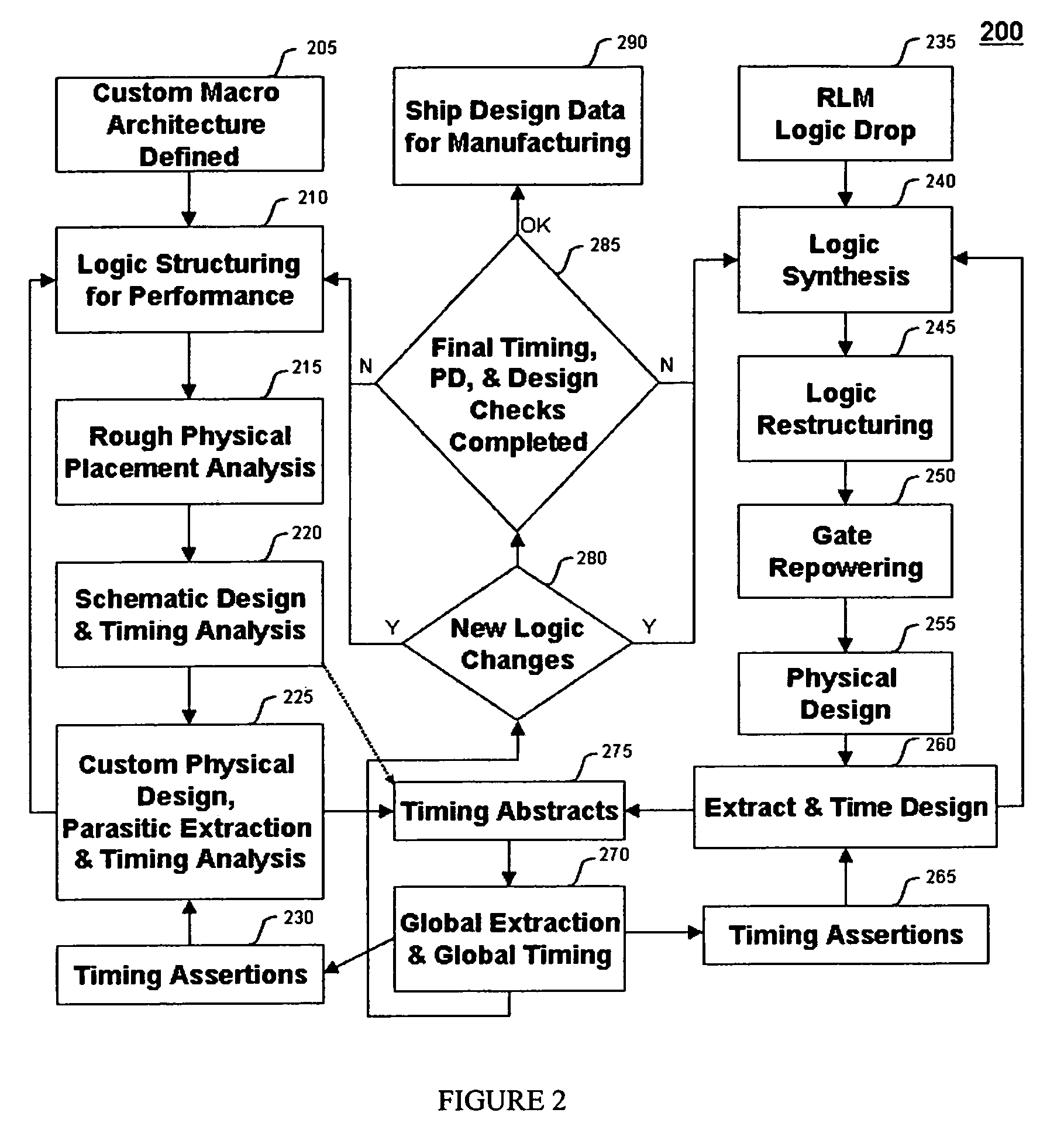Method for tuning a digital design for synthesized random logic circuit macros in a continuous design space with optional insertion of multiple threshold voltage devices
a random logic and design space technology, applied in computer aided design, program control, instruments, etc., to achieve the effect of minimizing “binning errors, optimizing more effective, and efficient and effective methods
- Summary
- Abstract
- Description
- Claims
- Application Information
AI Technical Summary
Benefits of technology
Problems solved by technology
Method used
Image
Examples
Embodiment Construction
[0038]An inventive design and optimization methodology for random logic macros (RLMs) is shown in FIG. 3 (flow 300). The salient features of the preferred components of this methodology and how they fit together are explained below.
[0039]Referring to FIG. 3, the first step is to import design data (box 335) that comes out of a logical or physical synthesis program, which is known to be logically correct. This design data is at the gate-level, i.e., it typically consists of a collection of logic gate primitives such as NAND gates, NOR gates, etc. These primitives are called “fixed cells” since they are available in fixed transistor size combinations in the library of logic gates. As will be described in detail below, the inventive methodology maps the fixed-cell gate-level design to an equivalent “parameterized cell” transistor-level design in order to apply sophisticated mathematical optimization techniques, and then finally returns the design to a fixed-cell gate-level description....
PUM
 Login to View More
Login to View More Abstract
Description
Claims
Application Information
 Login to View More
Login to View More - R&D
- Intellectual Property
- Life Sciences
- Materials
- Tech Scout
- Unparalleled Data Quality
- Higher Quality Content
- 60% Fewer Hallucinations
Browse by: Latest US Patents, China's latest patents, Technical Efficacy Thesaurus, Application Domain, Technology Topic, Popular Technical Reports.
© 2025 PatSnap. All rights reserved.Legal|Privacy policy|Modern Slavery Act Transparency Statement|Sitemap|About US| Contact US: help@patsnap.com



